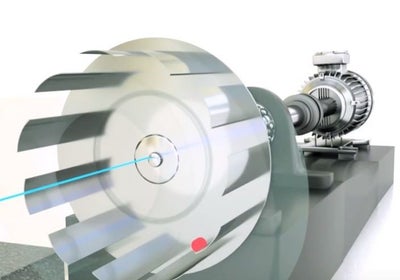Definitions
Vector – a quantity having both direction and magnitude
Polar Graph Paper – graph paper with equally spaced concentric circles divided into small arcs
Mils – Peak to Peak vibration displacement, 1 mil = .001 inches. Often used in field balancing
Trial Weight – Amount of weight added to a rotor that changes the unbalance condition
O – Vector representing the original unbalance
O + T – Vector representing the original plus trial weight unbalance
T – Vector representing difference between “O” and (“O”+”T”) This is the effect of the trial weight
A – Angle between “O” and “T”

Solving a single plane balance using vectors and polar graph paper
1 – At running speed measure the amplitude and phase at 1 x rpm. This is plotted as the “O” vector
“O” = 7 mils at 160 degrees
2 – Shut down the machine and add a trail weight of a known amount
Trial Weight = 100 grams (3.53 oz)
3 – Run the machine and record the new amplitude and phase. A rule of thumb is look for either a 30 degree phase change or a 30% change in amplitude. This vector is plotted as “O” + “T”
“O” + “T” = 5 mils at 70 degrees
4 – Connect the end of the “O” vector to the end of the “O” + “T” vector and label this as “T”
5 – Measure “T”
“T” = 9 mils
6 – Use the formula Correction weight = Trial weight x “O”/”T”
CW = 100 x 7/9 = 77.77 grams
7 – Measure the angle between “O” and “T” with a protractor
“A” = 35 degrees
8 – The goal is to adjust vector “T” so it is equal and opposite vector “O”
9 – Remove the trial weight and add a correction weight of 77.77 grams 35 degrees from the location of the trial weight
10 – For this example, the correction weight is shifted in the direction opposite the shift of the reference mark from “O” to “O” + “T”







